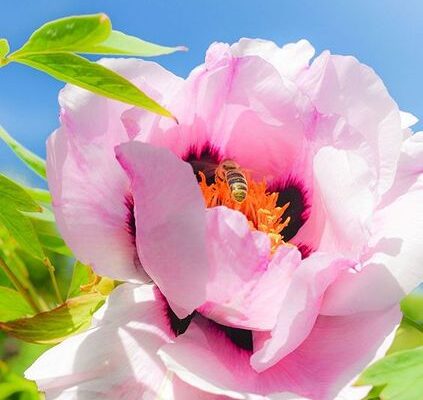10 Blissful Japanese Zen Garden Ideas
It’s no wonder that Japanese Zen Garden concepts are all the rage. They’re absolutely stunning, they’re simple and they require very little upkeep. Moreover, when it comes to garden designs, they offer an infallible solution for creating a peaceful outdoor space. And isn’t that something we all desire, to some extent?
With origins dating back several centuries in Japan, Japanese Zen Garden s were originally conceived as places for monks to meditate on the teachings of Buddha. They were designed to be minimalistic spaces, free from any distractions, in order to promote contemplation and a sense of serenity.
While other garden designs may rely on showy borders and bright colors, Japanese Zen Garden s embrace a more understated approach. Often, carefully positioned rocks and pebbles take center stage in these tranquil Japanese garden designs. Plant life is kept to a minimum, or at the very least, restricted to a limited palette. The end result not only exudes a sense of tranquility and calmness, but also appears effortlessly refined.
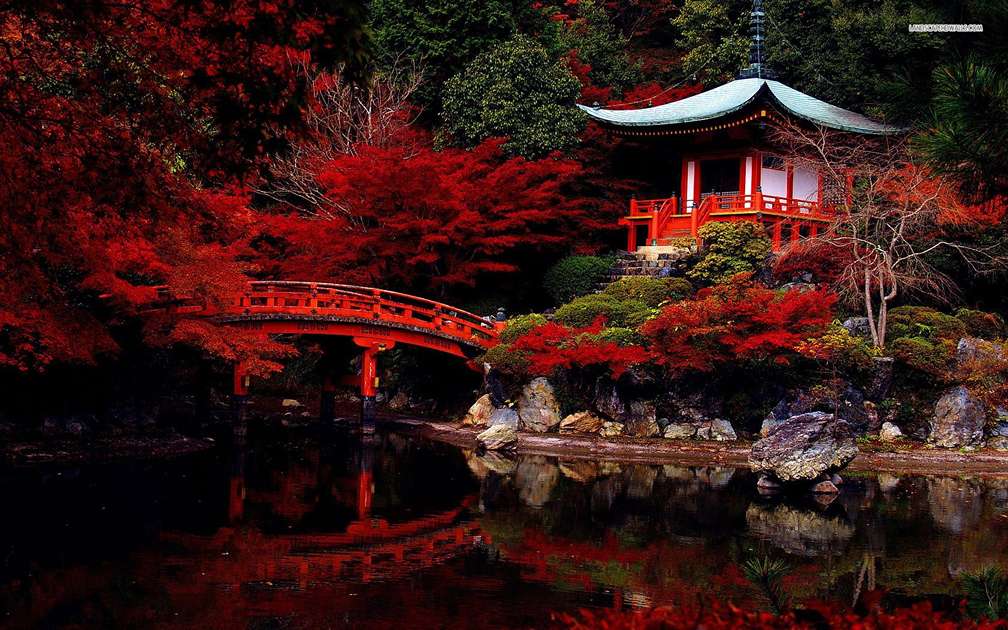
Japanese Zen Garden s offers a place for deep meditation, with each element carefully chosen and placed to create an atmosphere of tranquility and refinement. There is no clutter, no disorder, only a space where you can immerse yourself in the beauty of a single blossom, a delicate branch, the texture of a rock, or the graceful curves of sand patterns.
The best part is that you can easily bring the serenity of Japanese Zen Garden s into even the tiniest of outdoor spaces. Whether you have a small courtyard or a petite patio, you can recreate the ambiance and style of these gardens. So, if you’re eager to transform your backyard into a peaceful oasis, these ideas are certain to inspire you.
Crafting a Pathway with Stepping Stones
A garden without a pathway is like a painting without a frame – incomplete. However, garden paths can be much more than mere functional walkways. When designed with care, they can lead you on a mindful journey around your outdoor oasis, enveloping you in a sense of serenity and calmness.
By winding around a charming tree, a stunning statue, or a tranquil body of water, a pathway can serve as a means to encourage mindfulness in your daily routine. The use of natural stone and graceful curves, like the ones showcased in this tranquil setting, make every step a conscious act and force us to slow down.
So, why not draw inspiration from this design? The result will be a beautifully crafted pathway that takes you on a peaceful stroll through your garden, offering an opportunity to connect with nature and relish the lush greenery around you.
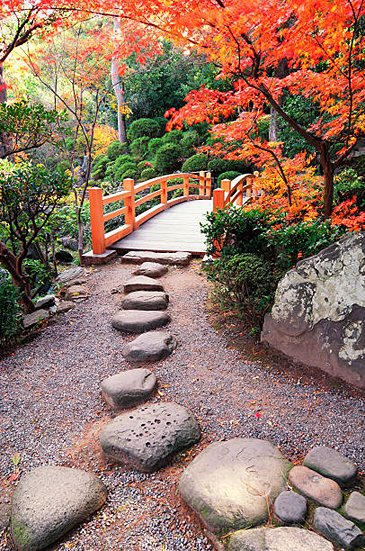
Encircle a basic water element with pebbles
The soothing sound and serene sight of water can work wonders for your mind and soul, which is precisely why water features are a fabulous addition to Japanese Zen Garden s. However, don’t get carried away by complicated designs and vibrant pond plants. Keep it simple, just like this stunning stone design that exudes elegance and tranquility.
Encircled by smooth pebbles and outlined by fine gravel, this sandy-hued water feature complements the surrounding landscape perfectly. The gentle flow of the fountain creates a focal point that can assist you in meditation, and the tranquil sound of water adds to the peaceful ambiance. You can also place a comfortable seat nearby to fully immerse yourself in the beauty of your garden.
To enhance the Zen atmosphere, you could consider planting a couple of small Acer trees nearby. The gentle sway of their leaves in the breeze will add a pop of color to the scenery and elevate the Zen vibes.
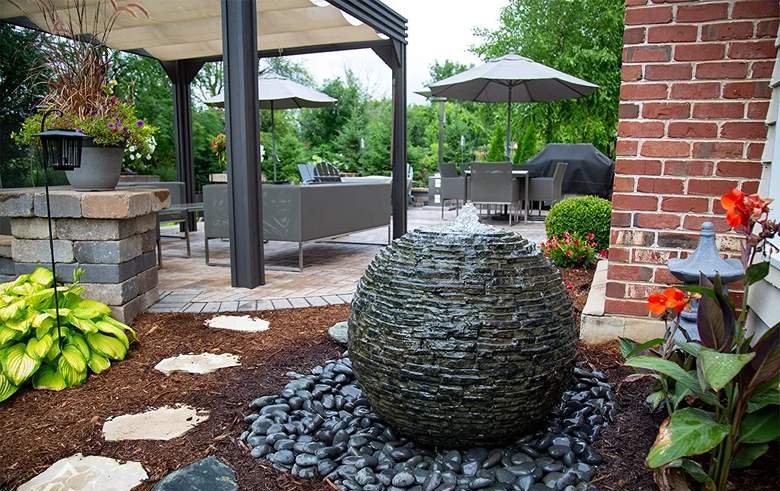
Incorporate a Magical Bridge
Bridges have long been an iconic feature of Japanese-style gardens and are equally enchanting in Japanese Zen Garden s. It’s not just their visual appeal that makes them so popular, as they also symbolize a journey of transformation and inspire deep contemplation.
If you’re fortunate enough to have a pond or even a small stream in your garden, a simple wooden bridge like the one pictured above can add a touch of charm and character to your outdoor space. However, you need not have water to justify a bridge as Japanese Zen Garden s often incorporate symbolic features. You can represent the flow of water with finely raked gravel, dry sand, or a pool of pebbles, known as a “dry river.” The placement of the dry river is crucial, as it should be arranged to run from east to south to west, as per traditional Japanese positioning.
A blossoming tree is always a delightful addition to any garden, particularly those with Japanese-inspired themes. A flowering cherry tree (Prunus) is an ideal choice as it allows for contemplation of each of the four seasons: the stark, bare branches in winter; the beautiful blooms in spring; the lush green foliage (in hues of purple, burgundy, bronze, or green) in summer, and finally, the resplendence of orange autumn leaves.
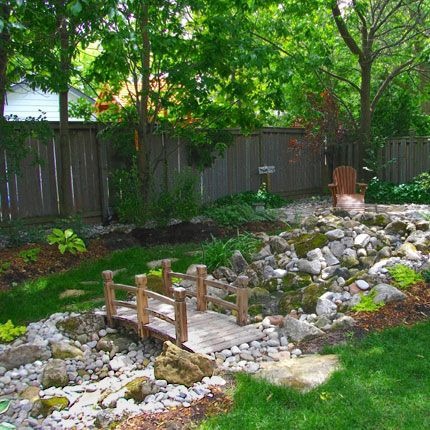
Select a Variety of Stone Hues
There’s no denying that immersing oneself in nature is incredibly calming, which is whyJapanese Zen Garden s draw inspiration from the natural world. These gardens often utilize symbolic features such as rocks and moss to represent larger elements of nature, such as mountains, islands, or forests.
To infuse your Japanese Zen Garden with a naturalistic touch, consider placing large stones and rocks as focal points throughout the space. They will not only provide a sculptural element but also blend in seamlessly with the surroundings.
If you’re feeling creative, take it up a notch and incorporate two different shades of gravel, using imaginative shapes and forms to create breathtaking visual appeal. The striking example above could be interpreted as either mountains piercing through the clouds or islands amidst the sea. To ensure everything stays in place, consider outlining your shapes with stone edging – you can find some fantastic ideas in our garden edging feature.
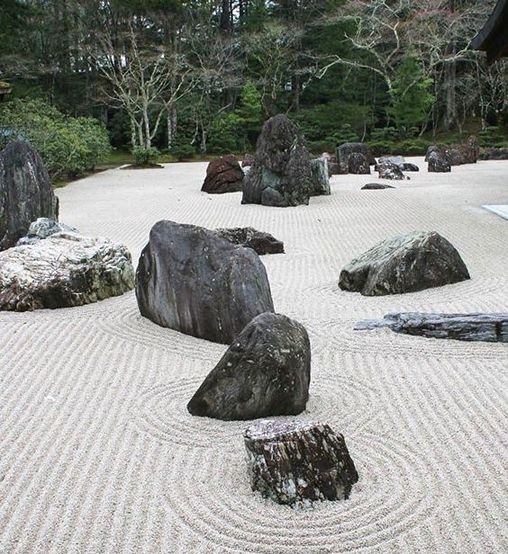
Choose an Archway Design
Are you searching for a way to elevate your Japanese Zen Garden to new heights? Look no further than this stunning design by Rhoda Maw Garden Design! The Corten steel moon gate is a standout feature, gracefully arching over a path and providing an irresistible focal point.
This elegant archway is an excellent way to showcase plants or other elements in your garden, particularly in long, narrow plots when paired with a stepping stone path. It’s a striking and sophisticated addition that is sure to take your Japanese Zen Garden ideas to the next level.
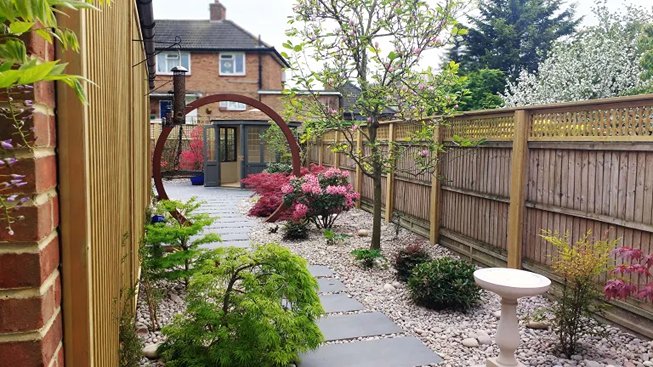
Add Ferns to Your Rock Garden for a Serene Ambience
If you’re seeking to infuse your Japanese Zen Garden ideas with a sense of timeless charm, consider incorporating ferns into your design. Not only do they add a soft, woodland touch and create a refreshing atmosphere, but they’re also surprisingly easy to grow. Marcus Eyles, Horticultural Director of Dobbies Garden Centres, suggests opting for hardy evergreen varieties like slow-growing tree ferns, hart’s-tongue fern (Asplenium scolopendrium), and wood fern (Dryopteris).
To showcase these lush greens, plant them among stone walls or at the edges of your borders. Their vibrant tones will beautifully complement the surrounding landscape, especially when paired with mossy areas – a classic choice for Japanese-inspired spaces. With ferns as a part of yourJapanese Zen Garden design, you’ll create an enchanting and tranquil oasis that you’ll love to spend time in.
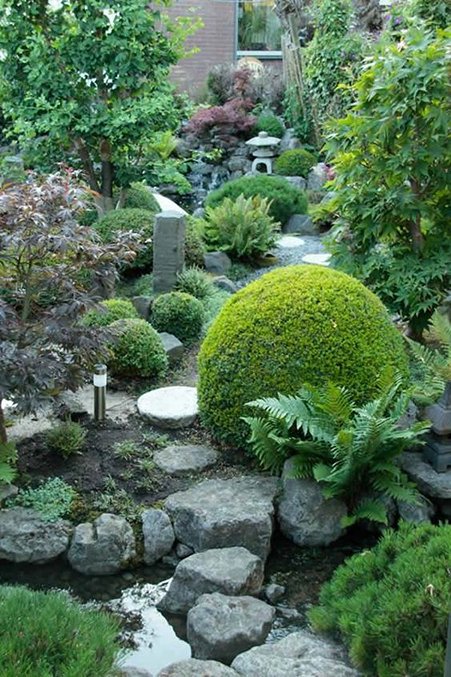
Add Soothing Sounds With Traditional Features
The elegant water feature you see above is called a Shishi Odoshi, a quintessential element of Japanese gardens. Crafted from bamboo, it produces a gentle and relaxing sound, which was originally designed to repel deer but is now widely admired for its soothing effect.
For those seeking Japanese Zen Garden ideas, incorporating a Shishi Odoshi can be an excellent choice, especially when placed amidst a variety of smooth stones and rocks, as exemplified in this beautiful setting.
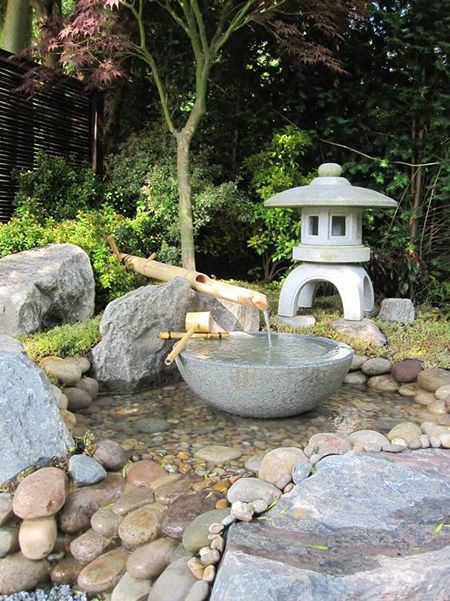
Embrace the Serenity of Curved Lines in Your Japanese Zen Garden Design
Create a peaceful haven with Japanese Zen Garden design by incorporating graceful curves. Whether it’s the lawn, pathways, or even the raked gravel, these soothing shapes can bring a sense of tranquility to your space.
Why not explore the art of topiary? Evergreen azaleas, shrubs, and even trees can be sculpted into soft, cloud-like shapes known as Niwaki in traditional Japanese gardens. With just your trusty garden shears and a bit of patience, you too can master this technique and enjoy a serene landscape.
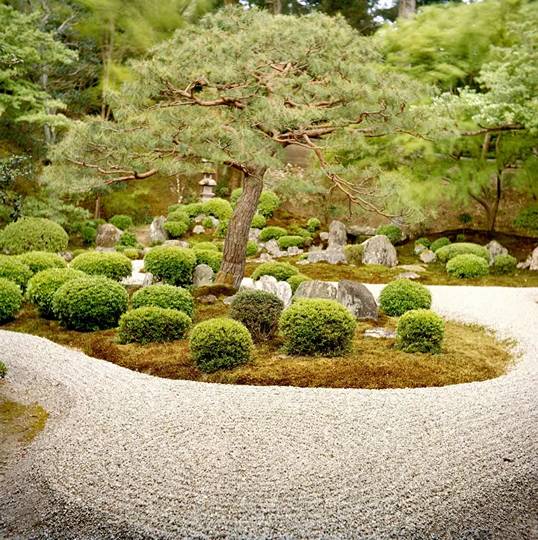
Use Large Stretches Of Gravel
Zen garden ideas often incorporate fine gravel or sand in pale hues, which represents water and can be raked into patterns to create the illusion of waves. The sight of these patterns can be soothing and the process of creating them can be a meditative exercise. To achieve an authentic Zen garden look, consider adding a designated gravel area with larger rocks as borders. You can also add a central tree, such as an Acer, to serve as a striking focal point and an opportunity to experiment with different patterns. For example, you can create a circular pattern around the tree’s trunk while keeping the rest of the area organized with straight lines for a subtle contrast.
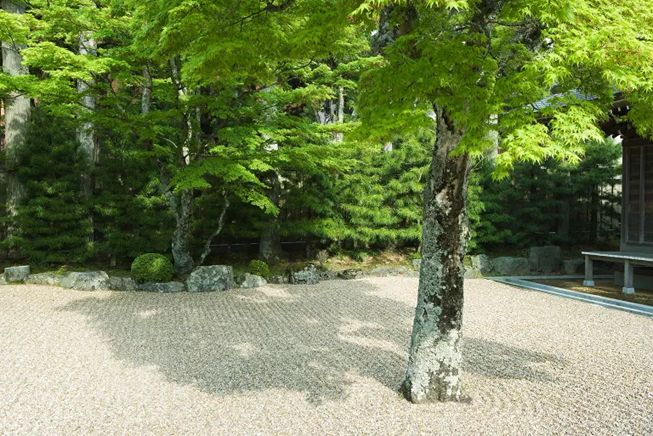
Add Vibrance to Your Landscape with Stunning Acer Trees
While Japanese Zen Garden design typically favors a minimalist color palette of natural stones and greenery, a strategically placed burst of color can elevate the ambiance. And what better way to achieve this than with the classic Japanese garden feature – the Acer tree?
With an array of sizes and varieties available, these magnificent trees flaunt breathtaking hues in the fall, like this fiery red. Against a backdrop of serene rocks and understated greenery, they make a stunning statement in any landscape.

What Are the Best Plants For a Japanese Zen Garden?
For a garden that retains its beauty throughout the year, choose evergreen plants that provide structure and interest. Consider bamboo (non-invasive varieties), conifers, Liriope muscari, Pachysandra terminalis, ornamental grasses, or even semi-evergreen ferns.
For a varied and dynamic display, opt for plants that offer seasonal interest. For example, Prunus ‘Kanzan’ delights with its pink blooms in spring and striking yellow-orange foliage in autumn, while Acer palmatum boasts fiery red-orange leaves during fall. To add a touch of elegance throughout summer, beautiful white hydrangeas are an excellent choice.



